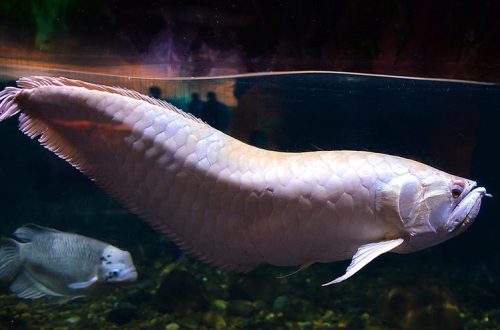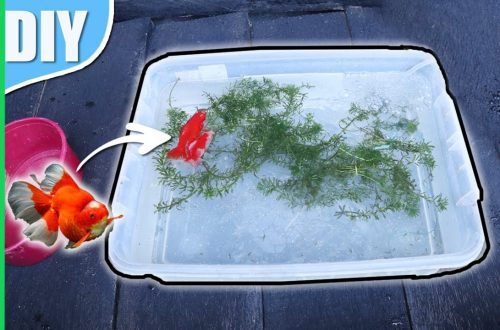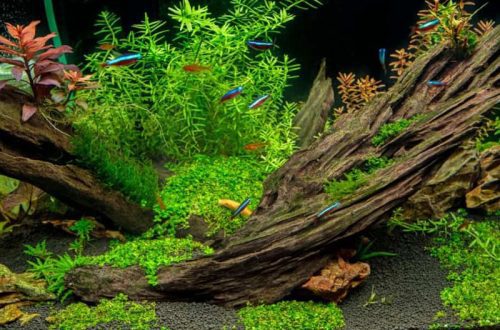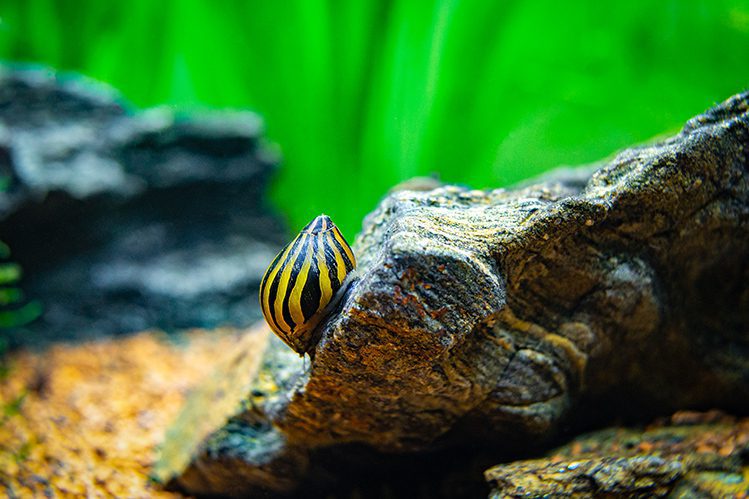
Are snails necessary in an aquarium?
Perhaps, any fish owner at least once thought about snails: maybe get them? Someone, without much thought, puts new cohabitants to the old inhabitants of the ecosystem, and someone considers in detail all the pros and cons. Some fish owners get acquainted with aquarium snails against their will when buying plants. Not everyone is happy with such an acquisition – perhaps in vain? Today we will talk about the benefits and dangers of aquarium snails, about the features of their maintenance and the most popular species. Let’s start!
Let’s start with the good news! Aquarium snails are fraught with great potential, which will play into the hands of any owner of an aquarium with fish.
What are the benefits of snails?
The snails eat the food not eaten by the fish. This addiction of snails prevents further decomposition of food and pollution of water.
Snails clean plaque from glass. Rest assured, you will not have to clean the glass as often as before the appearance of shellfish in the aquarium.
These pets are able to mix the soil of the aquarium, find the remnants of food or plants in it and eat them. It also helps with cleaning.
By the snails floating up, you can judge the presence of oxygen in the water. Babies floating on the surface signal that it’s time to turn on the compressor.
It is very pleasant to watch the life of snails. These kids with funny “horns” are able to cheer up you and your guests just by looking at them.
Snails allow you to diversify your little underwater world. It is much more interesting to admire an aquarium in which not only fish live.
When settling snails in an aquarium, a number of factors must be considered:
Snails reproduce quite quickly. Rapidly growing numbers of mollusks can lead to lack of oxygen and overpopulation of the territory.
If the snails do not have enough food, they will start eating plants. In this case, one day is enough for them to empty your aquarium.
In the process of life, snails leave feces and viscous mucus on all surfaces, which can lead to cloudy water.
A dead snail that has not been noticed in a timely manner releases dangerous toxins into the water. There are times when other inhabitants of the aquadom die because of them.
Some types of molluscs carry infections and worms. But usually this applies to snails brought from street reservoirs.
There have been a lot of downsides. However, they all rest on the number of snails in the aquarium. If you control the process of their reproduction, only pluses will remain from keeping snails!

To understand how many mollusks can live in an aquarium, we recommend stocking up on a reminder, using the example of one of the most common aquarium snails – snails:
In a small aquarium (up to 50 liters), three snails can live in peace.
Five individuals will get along in a medium-sized container (up to 96 liters).
And in a large vessel (over 96 liters) you can contain up to ten mollusks.
To control the number of snails in an aquarium, we recommend the following methods:
- bait trap
You can buy a ready-made device, or you can make it yourself.
It is enough to take a plastic bottle, fill it with fruit slices or chopped lettuce leaves and immerse the structure to the bottom of the aquarium. When the clams are filled in the bottle, we can carefully remove them from the aquarium and give them to those who wish.
- Manual catch
Wash your hands thoroughly, dry them and immerse them in the aquarium. Collect adults and babies that you can see. Then research seaweed with plants and collect extra neighbors.
Make sure that the required number of snails remains in the aquarium, and distribute the rest in good hands.
- Aquarium flushing
Move all the fish and the desired number of clams to another tank, place a bait trap, or manually catch the remaining individuals. Then do a normal flush and restart the aquarium.
Caring for snails does not require much effort. Perhaps the most difficult and energy-intensive is maintaining an acceptable population.
Let’s analyze the main aspects in caring for them:
Buy snails in specialized stores. Buying mollusks from your hands or bringing them from the street, you run the risk of introducing an infection or worms into the aquarium.
Do not introduce new pets to predatory fish. Such a neighborhood for the snail will end in tragedy.
This type of pets will not be limited to the study of only the aquatic part of the aquarium. After a while, the snail decides to crawl above the water surface, so be sure to close the aquarium with a lid.
All purchased plants must be checked for the presence of mollusks. Such measures will help to avoid getting new unexpected residents into the formed ecosystem.
Some types of snails require special conditions, such as water temperature and pH.
What to feed snails in an aquarium? But nothing! Mollusks are saturated with the waste products of fish, food residues, plants and plaque on the glass.
In the next section, we will tell you about the most popular and unpretentious mollusks.
- ampoule
One of the most recognizable inhabitants of the aquarium with a rounded yellow shell.
The snail feels good at a temperature of 19-27°C and with a sufficient number of plants.
The mollusk is heterosexual, so breeding will require several individuals of the opposite sex.
- Coils
Small easily recognizable snails that are not demanding on the conditions of detention.
It is important to remember that these babies easily waste their oxygen supplies, so a working filter is a must.
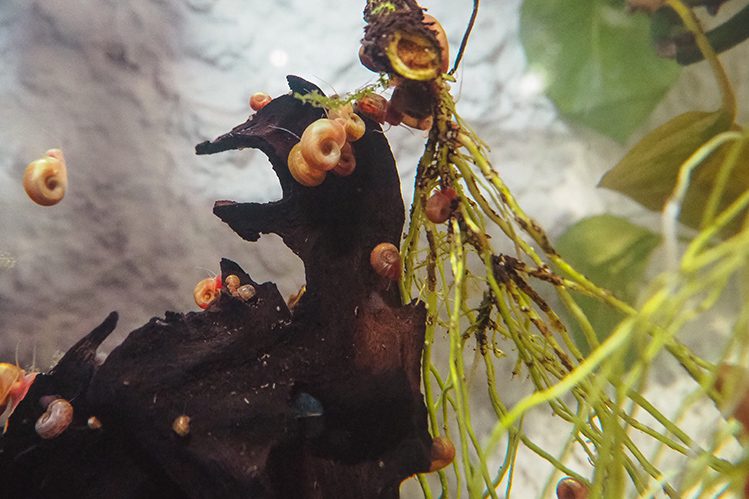
- Melania
The owner of a cone-shaped shell is often found in aquariums. And this is not surprising, because it does an excellent job of cleaning the soil and is absolutely unpretentious.
We believe that if the heart asks, then the snails are definitely worth putting into your aquarium. They will not only decorate it with their presence, but also help with maintaining cleanliness in it. And how much fun you get from watching the entire ecosystem as a whole! Hold on, friends!



